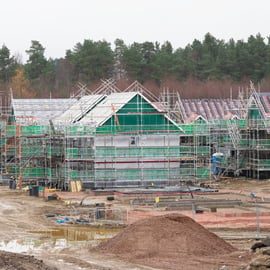As a developer or investor, what first comes to mind when you hear “affordable housing”? If you thought of lower rent, lower operating income, or a lower return on investment, you are not alone. Before the 80s, many developers held a similar mindset — there was no tangible incentive to build affordable housing.
In 1986, policymakers introduced the Low-Income Housing Tax Credit (LIHTC) as part of the Tax Reform Act to encourage developers to construct units for residents with rents based on area median income. Since then, the LIHTC, also known as the Section 42 Tax Credit, has grown to be the country's largest source of affordable housing financing.
What Is the Low-Income Housing Tax Credit?

With the Low-Income Housing Tax Credit Program, a developer receives federal income tax credits in exchange for providing long-term affordable housing. The LIHTC credit offers a dollar-for-dollar match on tax liability, unlike a tax dedication, which only reduces taxable income.
Due to the need for upfront financing to complete construction, developers can sell the tax credits to a third party in exchange for equity financing. This equity helps cover direct development costs and reduces the reliance upon debt. With lower financing costs, developers are able to charge lower rent, thus expanding the community's supply of affordable rental housing.
The Type of Low-Income Housing Tax Credits
The 4% tax credit generates around 30% of a development's cost and is often utilized on rehabilitation projects that include the acquisition cost of an existing building(s). On the other hand, the 9% tax credit generates around 70% of a development's cost in the project and generally is used for new construction projects without federal subsidies. Rental properties that qualify for the LIHTC typically have lower vacancy and lower debt payments than market rate housing.
How to Apply for the Low-Income Housing Tax Credit

Because the tax credits are provided to each state based on population, the application process differs by location. You can use this free online tool to determine the next steps to apply for a LIHTC.
Stearns Bank and Low-Income Housing Construction
Once a LIHTC has been reserved, you will need to find an investor to help fund the proposed development. It’s crucial to partner with a trusted financial institution for many reasons. The right partner can help navigate the requirements of the tax fund program to ensure that your project is able to provide long-term affordable housing to the community.
Partner with Stearns Bank

At Stearns Bank, we are proud to support vibrant, diverse neighborhoods by providing loans and investments for low-income communities. Since the program’s start, we have financed more than $1.5 billion in affordable housing loans.
Stearns Bank efficiently manages the construction process with an in-house construction disbursement team. Not to mention, we can greatly reduce outside attorney fees.
When you partner with Stearns Bank for your LIHTC construction project, your needs come first. You can always count on Stearns Bank for a prompt response and answer on the very first ring. Connect with our affordable housing finance team today to take the first step.

